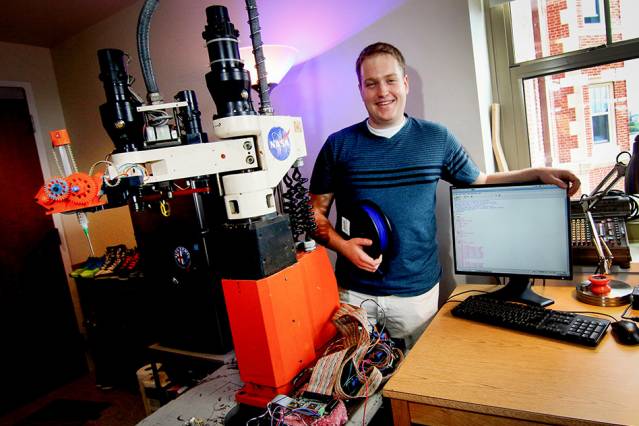
When an aspiring mechanical engineer on a budget wants a top-of-the-line guitar, what does he do? He makes it himself, of course.
At age 13, Nathan Spielberg — now an MIT senior — began building his first guitar, a process that consumed his attention for eight hours a day, every weekend, for 3 1/2 years. Reminiscing now, he calls it a full-time hobby, but it was also pure inspiration: Strumming away on what was once a mere block of wood, Spielberg grew to appreciate the potential to turn an abstract idea into a functional object.
As a mechanical engineering major at MIT, he has held onto this tenet, but turned his attention to a new means of production: 3-D printing. Until recently, Spielberg worked in the MIT Media Lab with Neri Oxman, the Sony Corporation Career Development Assistant Professor of Media Arts and Sciences, and PhD student Steven Keating. There, he focused on optimizing system designs that can handle large-scale printing projects, like houses.
As Spielberg sees it, 3-D printing has two extremes: At one end is rapid prototyping, which allows researchers to design, print, and experiment — and then design, print, and experiment again — many times faster than traditional manufacturing. On the other end is express, large-scale construction of single objects. That’s where his research with Oxman comes in.
Read more at ENGINEERING.com

